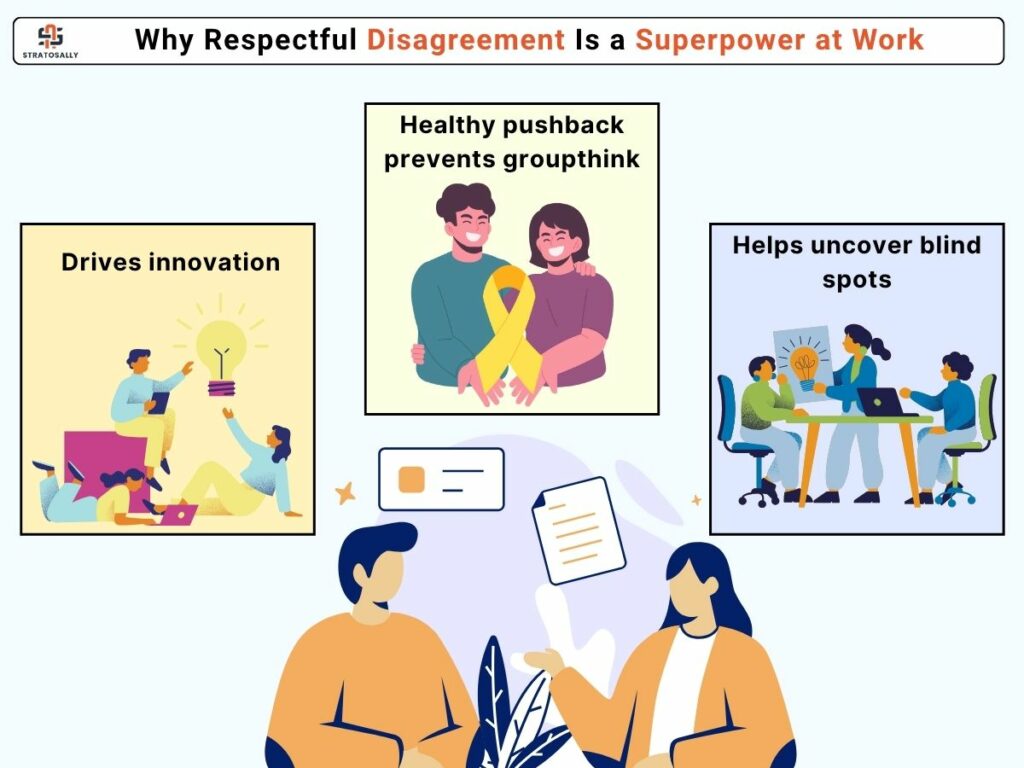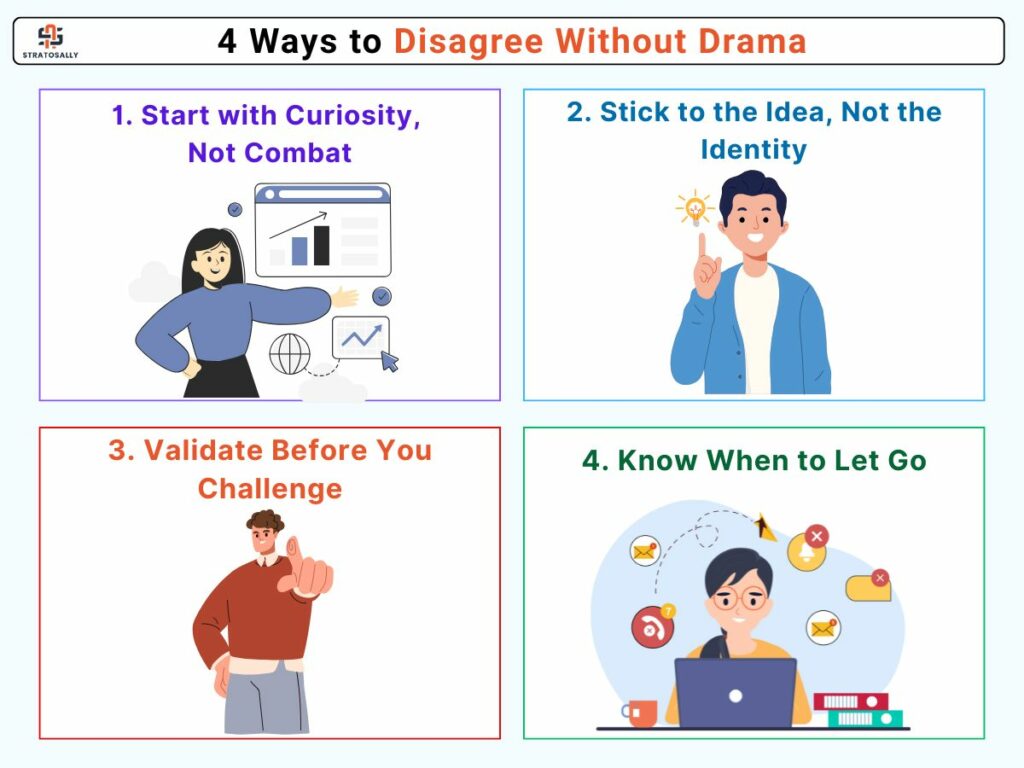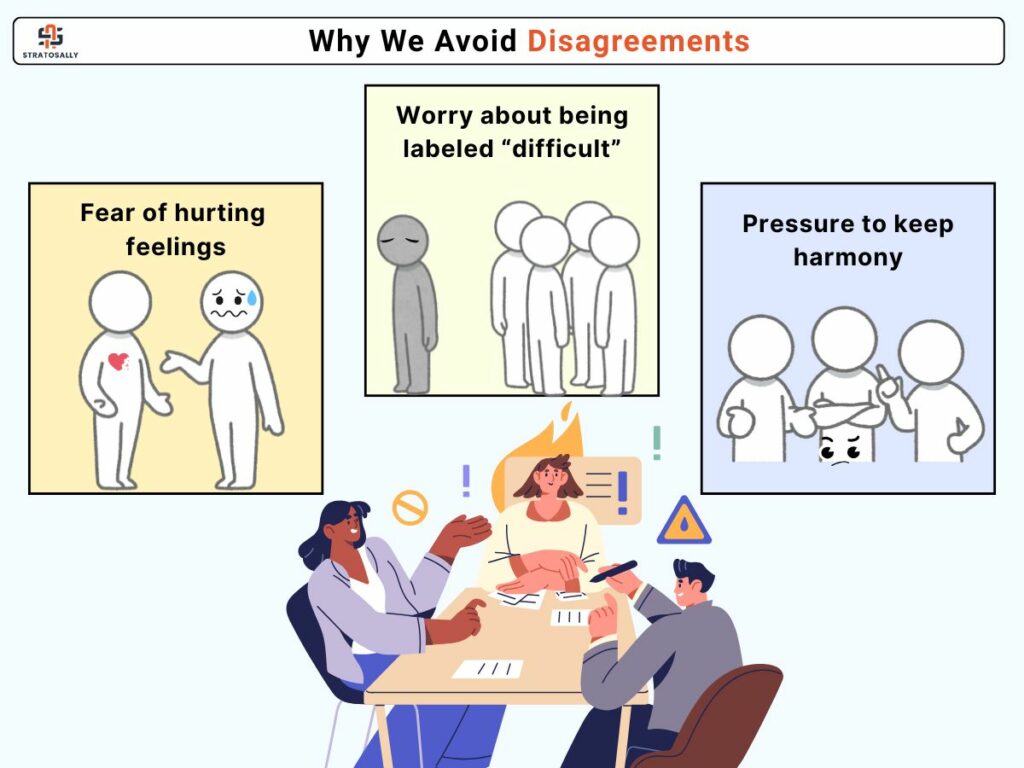Disagreement is a natural part of being human. In fact, if you have never disagreed with someone, are you even human?
Let’s be honest, disagreements are uncomfortable whether it is a heated debate with a colleague during a team meeting or that silent, awkward tension when your idea gets shut down in a group project.
But here’s the important part, most of us are not taught how to disagree respectfully. We are either told to stay quiet to keep the peace, or we go full-on keyboard warrior mode and argue like it’s a Twitter battle. Somewhere in the middle lies the art, the graceful, powerful, and productive act of respectfully challenging ideas, not the people behind them.
Why Disagreements Matter
Let’s start with the obvious: disagreements are often seen as threats. Threats to harmony, threats to our egos, threats to relationships. So what do we do?
We agree, nod along, or stay silent, even when our gut says, “Wait, this doesn’t seem right.”
And it is not because we are weak. Sometimes, we do it because we care and don’t want to hurt others’ feelings, seem rude, or get labeled as “difficult.” But the fact is, disagreeing with someone is not disrespect. What makes it disrespectful is how we do it.
It’s Not Personal, It’s Perspective
Imagine this: You are in a meeting. You have spent hours researching and building the project. And then, someone across the table says, “I don’t think that’s the right direction.”
What will be your immediate reaction? Defend, justify, or maybe even mentally blacklist them from your lunch circle.
But pause for a second and rethink. Maybe they are not attacking you. Maybe they noticed something you have missed. That is what respectful disagreement is all about, separating the idea from the identity. Disagreeing with someone does not mean you are invalidating their worth. It means you are exploring a different point of view because we all have unique perspectives and think differently.
Always remember, challenge the argument, not the person. This mindset creates a safe space where disagreement is no longer a conflict, but a collaboration.
Why Respectful Disagreement is a Superpower at Work
In the workplace, where we are working with diverse people, disagreements can happen. And honestly, I feel it should happen.

Imagine a team where everyone agrees all the time, no friction, no pushback, no questions. Sounds like a good team, right? Nope, that doesn’t sound like a good team.
It usually means:
- People are too afraid to speak up.
- Groupthink is running the show.
But when it happens, the growth of the team will stop, no new ideas, no new innovations will be there. On the other hand, respectful disagreement leads to innovation, better decisions, and stronger teams. Conflict, when handled constructively, can lead to more thoughtful, inclusive outcomes. It encourages people to express their views and uncover blind spots.
The key to respectful disagreement is not about being right. It is about getting it right.
So, How Do You Disagree Without Drama?
Now we get into the interesting part. How do you challenge someone’s ideas without starting a cold war?

Here are a few tips (served warm, not spicy):
1. Start with Curiosity, Not Combat
When you don’t agree with someone’s idea, instead of saying directly, “I don’t agree with you,” try:
“That’s interesting. I’m wondering if we’ve considered another angle?”
Tone is everything. Be a question-asker, not a bulldozer.
2. Stick to the Idea, Not the Identity
Remember: “This plan has a few gaps” is very different from “You clearly didn’t think this through.”
Focus on the message, not the messenger.
3. Validate Before You Challenge
Before diving into your counterpoint, it is important to acknowledge their viewpoint also.
For example:
“You bring up a great point. At the same time, I think this method will work best in this case.”
Validation builds bridges, not walls.
4. Know When to Let Go
. Pick your battles wisely. Sometimes, it is better to step back.
The Fear of Offending: A Real Barrier
What I noticed, and many of you would agree, is that this is a big reason people avoid disagreeing: the fear of hurting feelings or being labeled “negative.” This is especially true in cultures where harmony is prized over honesty.

But guess what? Avoiding disagreement does not prevent conflict; it just delays it. And as a result, feelings of anger, bitterness, or unfairness start to grow over time.
In workplaces where people feel safe to speak up, trust grows. Where disagreement becomes an act of care, not criticism, and when people know they won’t be personally attacked for sharing a different opinion, they are more likely to contribute openly and meaningfully.
Final Thoughts: Make Disagreement Normal Again
Disagreement is not a problem to be solved, it is a muscle to be trained.
It means we are thinking critically. It means we are listening. It means we are growing.
But it only works when it is done with empathy, humility, and respect. We’re not here to “win” arguments or prove others wrong. We’re here to understand, explore, and co-create better ideas.
So the next time someone disagrees with you, or you feel the itch to disagree, take a deep breath, drop the ego, and lean in. Disagreement, when done right, can be one of the most human, powerful, and constructive things we do.
Because at the end of the day, it’s not about challenging people. It’s about challenging the world to be just a little bit smarter.
This isn’t the end. It’s the awkward ‘please follow us’ part. LinkedIn and Instagram. You know what to do.






